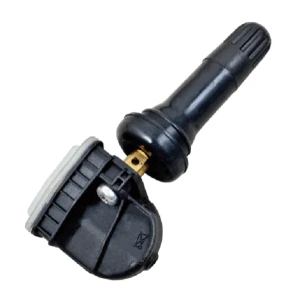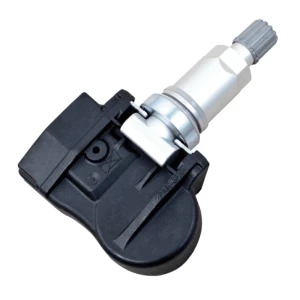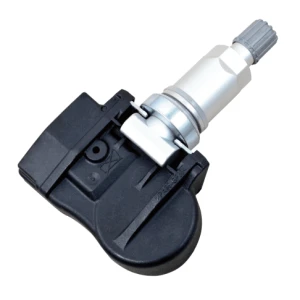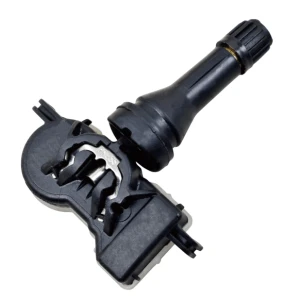Date: 2024.11.04 Click: 366
1. Definition and Types of Automobile Tire Pressure Monitoring Sensor
Tire pressure monitoring sensor (TPMS) is a key safety device designed to monitor the air pressure status of automobile tires in real time to ensure driving safety and vehicle performance. According to the working principle, TPMS is mainly divided into two types:
Active sensor: This sensor is directly installed in each tire, monitors tire pressure in real time through pressure sensor, and transmits data to the on-board computer through wireless signal. Active sensors can usually provide more accurate tire pressure readings and real-time monitoring.
Passive sensor: This sensor does not directly measure tire pressure, but indirectly estimates tire pressure using wheel speed sensor. It infers the high and low tire pressure by monitoring the change in tire speed. This sensor is relatively low in cost, but has poor accuracy and real-time performance.
In many countries and regions, TPMS is an important part of automobile safety standards, and regulations require new cars to be equipped with this device to improve driving safety.

2. Importance of tire pressure monitoring
Tire pressure monitoring is crucial to the safety and performance of vehicles. The following is an analysis of the importance of tire pressure monitoring:
Safety: Tires are the only part of the car that contacts the ground, and proper tire pressure can effectively reduce the risk of accidents. Incorrect tire pressure may cause tire blowout or loss of control, increasing the possibility of accidents.
Fuel efficiency: Low tire pressure will increase tire rolling resistance, thereby increasing fuel consumption. Maintaining proper tire pressure can improve fuel efficiency and reduce driving costs.
Extend tire life: Improper tire pressure will cause uneven tire wear and shorten the service life of the tire. Regularly monitoring tire pressure helps maintain the condition of the tire and extend its service life.

3. Working principle of tire pressure monitoring sensor
The working principle of tire pressure monitoring sensor is relatively simple but efficient:
Construction: TPMS consists of a pressure sensor, a wireless transmitter and a power supply unit. The pressure sensor monitors the air pressure in the tire in real time, and the transmitter transmits the data wirelessly to the on-board computer.
Alarm mechanism: When the monitored tire pressure is lower than the set value, the system will alert the driver through the warning light on the dashboard or the sound alarm. At this time, the driver needs to check the tire and inflate it in time.
Troubleshooting: Common faults include sensor battery exhaustion, signal interference or sensor damage. Regular inspection and maintenance can ensure the normal operation of the system.
4. How to maintain and calibrate tire pressure monitoring sensors
To ensure the accuracy and reliability of tire pressure monitoring systems, maintenance and calibration are essential:
Regular inspection: Check the tire pressure regularly and make sure the sensor is working properly. It is recommended to check tire pressure once a month, especially before long trips.
Calibration steps: Calibration usually requires professional equipment. Follow the manufacturer's instructions, which generally includes setting the standard tire pressure value and resetting the system.
Sensor replacement: If the sensor fails, it needs to be replaced in time. The battery life of modern sensors is usually 5 to 10 years. When this period is exceeded, it is recommended to replace it.

5. Future development trends of tire pressure monitoring technology
With the development of science and technology, tire pressure monitoring technology is also constantly improving:
New materials and new technologies: Future sensors may use lighter and more durable new materials to improve measurement accuracy and durability. At the same time, the application of new technologies may make sensors more intelligent.
Intelligence and networking: Integrate TPMS into intelligent driving systems to achieve data sharing and remote monitoring. For example, in the future, there may be systems that can monitor tire pressure through mobile phone applications.
Market Outlook and Challenges: With the development of autonomous driving technology, the demand for TPMS may increase, but it also faces challenges of technological updates and market competition.

References
National Motor Vehicle Safety Standards
Automotive Technology-Related Journals and Papers
Official Guides and Manuals of Automakers
Interviews and Opinions of Industry Experts
Please leave your requirements and contact information, and we will send you the quotation information as soon as possible.